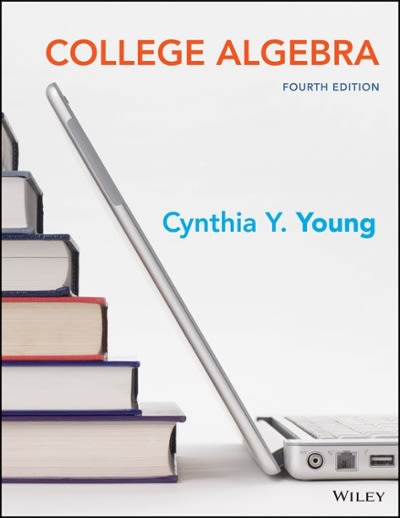Question
2 . Suppose have a coin, but aren't sure whether it is actually fair or not. To test it for fairness, we use the following
2. Suppose have a coin, but aren't sure whether it is actually fair or not. To test it for fairness, we use the following new version of the "close enough" test. Caution:This is a little bit different than in the class work:
- Flip the coin a certain number of times.
- If it is "close enoughto being half heads half tails," in the sense that between 40% and 60% of the flips are heads, in the inclusive sense of "between" (including exactly 40% and exactly 60%), then the coin passes the test, i.e. we conclude that the coin is fair.
- Otherwise the coin fails the test, i.e. we conclude that the coin is unfair.
We continue to assume that the coin really is fair, and what we're trying to find out is how good a job the test does of recognizing that the coin is fair. If it misidentifies a fair coin as unfair, then that is bad news.
a. if you flip the fair coin 20 times, what is the probability that it passes the new "close enough" test?
Write the answer first as a mathematical expression using C(N,k) notation, then find the numerical answer to four decimal places.
[Hint: Think first, how many heads is 40% of 20 heads? How many is 60% of 20 heads? What are all possible numbers of heads between these?]
b. If you flip the fair coin 40 times, what is the probability that it passes the "close enough" test?
Write the answer first as a mathematical expression using C(N,k) notation, then find the numerical answer to four decimal places.
[Hint: Think first, how many heads is 40% of 40 heads?How many is 60% of 40 heads? What are all possible numbers of heads between these?]
c. Which version of the new "close enough" test is a fair coin more likely to pass, the 20-flip or the 40-flip version?
d. Which version of the new "close enough" test is more likely to produce a false negative (i.e. where a fair coin fails the test), the 20-flip or the 40-flip version? Write down what the probability of a false negative is for each version of the test.
Step by Step Solution
There are 3 Steps involved in it
Step: 1

Get Instant Access to Expert-Tailored Solutions
See step-by-step solutions with expert insights and AI powered tools for academic success
Step: 2

Step: 3

Ace Your Homework with AI
Get the answers you need in no time with our AI-driven, step-by-step assistance
Get Started


